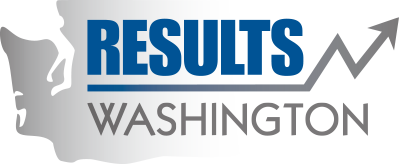Archived: Washington schools serving nutritious, Washington grown foods to children
All schools in Washington buy fruits, vegetables, grains, fish, meat, milk and value-added foods to serve in meals and snacks.
According to the 2012 USDA Farm to School census, Washington school districts spent approximately $43.5 million for food in the 2011-12 school year, and $10.5 million was spent locally.
Increasing local purchases for school meals and snacks both serves to improve public health and grow the economy by keeping more money circulating in the statewide economy.
USDA Farm to school census data collected in the 2011-2012 School Year indicated that 104 of Washington’s school districts, representing 1,144 (47%) schools were engaged in at least one activity that connects farms to schools, including garden education, school field trips, local foods tastings, and procurement of Washington grown foods.
WSDA survey data from 2011 and 2012 indicated that 46 of Washington’s 297 school districts regularly obtain Washington grown food for their school meal and snack programs. It should be noted the response rate for these surveys was low (about 15%), thus the estimate for the number of schools using Washington grown foods is under-reported. A survey conducted in 2014 had a greater than 75% response rate. Data from that survey indicates 179 of the 296 school districts, representing 1,734 schools, regularly obtain Washington grown food for their students. For milk, all school districts in Washington serve milk produced locally.
- Reviewing baseline data from WSDA surveys and USDA Farm to School census data.
- Refining and streamlining WSDA survey plans in order to accurately measure change toward the goal of a 15% increase in purchasing of Washington grown foods for school meals and snacks.
- Providing technical assistance to farms, food processors, distributors and schools in the areas of procurement policy, regulatory requirements for food safety, nutrition education, menu planning, community awareness, and more.
- Matching appropriately scaled farms, food processors, local distributors and schools that are uniquely positioned to do business together.
Read and understand the Wellness Policy that governs your local school district’s priorities for facilitating improved health and nutrition through nutritious meals and increased physical activity.
Visit www.wafarmtoschool.org to learn about ways that schools and farms can work together, and how community engagement can facilitate greater connections between farms, food processors and schools.
Visit http://www.fns.usda.gov/farmtoschool/farm-school to augment your knowledge of regional work with a nationwide view of farm to school efforts in every region of the U.S.
Centers for Disease Control and Prevention, “Trends in the Prevalence of Obesity, Dietary Behaviors, and Weight Control Practices.” http://www.fns.usda.gov/cnd/governance/regulations/2011-04-22.pdf.
